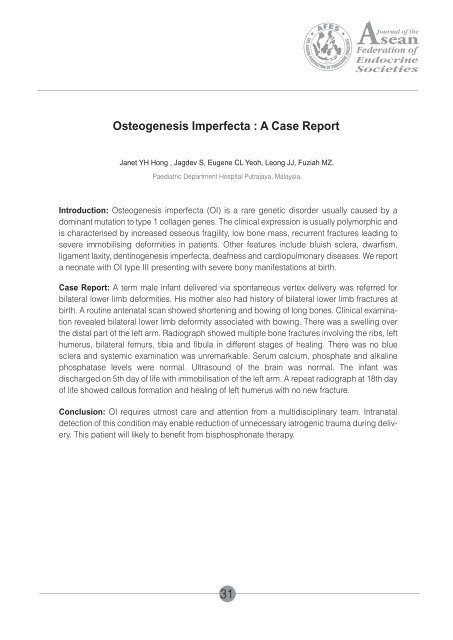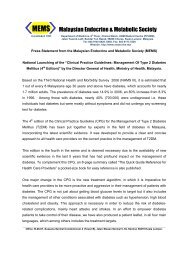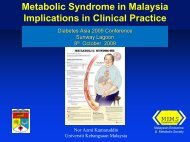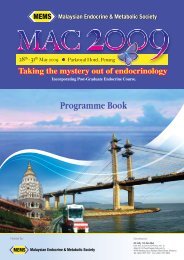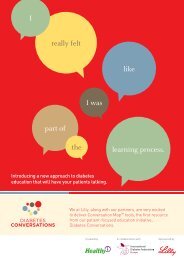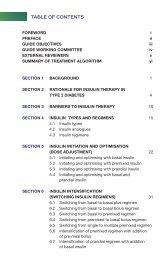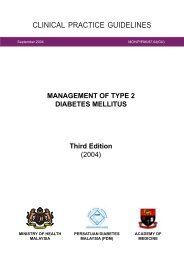JAFES-Booklet (English - pdf - 1103 Kb) - MEMS
JAFES-Booklet (English - pdf - 1103 Kb) - MEMS
JAFES-Booklet (English - pdf - 1103 Kb) - MEMS
Create successful ePaper yourself
Turn your PDF publications into a flip-book with our unique Google optimized e-Paper software.
Osteogenesis Imperfecta : A Case Report<br />
Janet YH Hong , Jagdev S, Eugene CL Yeoh, Leong JJ, Fuziah MZ.<br />
Paediatric Department Hospital Putrajaya, Malaysia.<br />
Introduction: Osteogenesis imperfecta (OI) is a rare genetic disorder usually caused by a<br />
dominant mutation to type 1 collagen genes. The clinical expression is usually polymorphic and<br />
is characterised by increased osseous fragility, low bone mass, recurrent fractures leading to<br />
severe immobilising deformities in patients. Other features include bluish sclera, dwarfism,<br />
ligament laxity, dentinogenesis imperfecta, deafness and cardiopulmonary diseases. We report<br />
a neonate with OI type III presenting with severe bony manifestations at birth.<br />
Case Report: A term male infant delivered via spontaneous vertex delivery was referred for<br />
bilateral lower limb deformities. His mother also had history of bilateral lower limb fractures at<br />
birth. A routine antenatal scan showed shortening and bowing of long bones. Clinical examination<br />
revealed bilateral lower limb deformity associated with bowing. There was a swelling over<br />
the distal part of the left arm. Radiograph showed multiple bone fractures involving the ribs, left<br />
humerus, bilateral femurs, tibia and fibula in different stages of healing. There was no blue<br />
sclera and systemic examination was unremarkable. Serum calcium, phosphate and alkaline<br />
phosphatase levels were normal. Ultrasound of the brain was normal. The infant was<br />
discharged on 5th day of life with immobilisation of the left arm. A repeat radiograph at 18th day<br />
of life showed callous formation and healing of left humerus with no new fracture.<br />
Conclusion: OI requires utmost care and attention from a multidisciplinary team. Intranatal<br />
detection of this condition may enable reduction of unnecessary iatrogenic trauma during delivery.<br />
This patient will likely to benefit from bisphosphonate therapy.<br />
31


